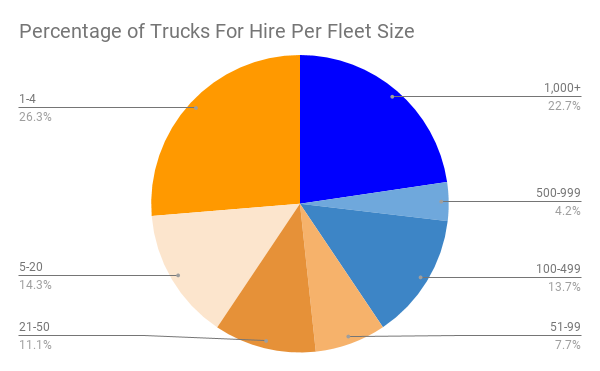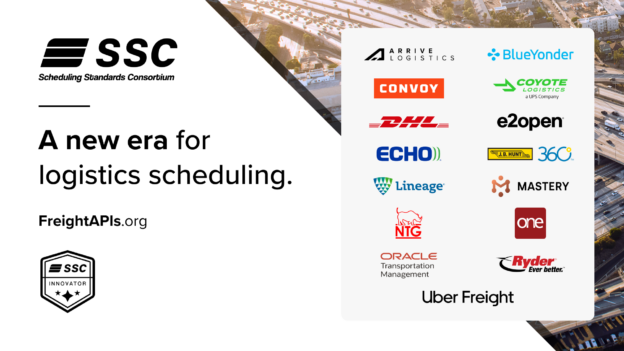3 Compliance Risks for Shippers and Why They Matter
Industry Insights, Shippers • Published on February 28, 2019
Shippers hire brokers for a number of reasons, most commonly to access capacity. Much of the “capacity” in the U.S. is anecdotally attributed to national asset carriers. However, in the for-hire truck market, the largest carriers (those with 100+ trucks in their fleets) only account for about 40% of trucks available. The remaining 60% of trucks belong to smaller carriers, with over a quarter in fleets with fewer than five trucks. By using a broker, shippers can access this long tail of supply.

When shippers award segments of their routing guide volume to asset carriers, they often believe they’re able to exert more control over service levels and risk. So, it may come as a surprise that a 2016 study by LaneAxis found that asset carriers broker their loads to other carriers 42% of the time.
With that much brokering going on, it’s imperative shippers understand and have confidence in their service providers’ compliance standards — and they must understand how their asset carriers and brokers adhere to those standards. If you don’t, you could introduce significant legal, financial, service, and reputational risks into the supply chain.

1. Substandard Carrier Vetting Amplifies Risk Exposure
Over the last decade, we’ve seen brokers, asset carriers, and shippers get pulled into lawsuits with high-dollar verdicts because of truck drivers involved in serious motor vehicle accidents.
How does this happen?
Sometimes vicarious liability comes into play. That means that even though the driver of the truck would likely be primarily liable for the collision and injuries, others could be found to be secondarily liable for the accident. Another area of risk can occur when carriers are not appropriately vetted.
One way to prevent these risks is to have a service provider committed to appropriate standards for vetting carriers — and for them to apply these standards consistently.
In the absence of a national hiring standard, the burden of responsibility can fall to brokers, asset carriers, and shippers to establish a set of requirements for the carriers that they work with, along with a robust process to manage compliance with those requirements.

2. High Standards for Carrier Safety Mean Reduced Risk to the Bottom Line
A more common financial risk — and one everyone is familiar with — is cargo claims.
These are often caused by theft or damage during transit. In any claim, the customer is exposed to risks and costs that are not part of the direct value of the goods. Things like the operational cost/burden of remanufacturing, crating and packaging costs, lost time, lost sales, downtime on a line for a critical part, or an angry customer who didn’t get their order.
When motor carriers seek insurance, they’re assessed by underwriters who use an actuarial model to measure risk. It stands to reason that carriers who have poor safety records — and who are therefore rated as risky by insurers — also run their businesses in a manner more likely to result in claims.
Accidents and unexpected events are an unfortunate part of this industry. In order to decrease the likelihood of incidents happening, it’s important the underlying motor carriers assigned to haul loads have passed a comprehensive compliance assessment conducted by the broker or shipper.

3. Carrier Safety Practices Impact Performance
Safety and performance are related. When reviewing on-the-job performance of carriers who were previously active in our network and subsequently removed due to non-compliance, we found that carriers who fell below our safety thresholds were also, on average, worse performing than carriers with higher safety scores. By setting higher standards for carrier safety, we also raised the bar for performance in our carrier network.
Carriers who proactively foster a culture focused on safety reduce risk for themselves and for others they work with. These carriers also typically run a tight ship. They tend to:
-
- Follow through on their commitments when they accept a tender.
-
- Show up on time.
-
- Act professionally.
- Follow shipping instructions.
And those carriers that don’t, well…don’t expect the same results. If carriers who are not as safe don’t perform as well, what’s the risk?
The first is fall off, which means when a carrier does not pick up a load, especially close to an appointment. This means the broker or shipper is scrambling to recover the load. They are also typically paying more to get the next carrier on the load because of a short lead time, and the pickup might be delayed.
The second is late arrivals. There are a cascade of results stemming from late arrivals that have serious impacts to business.
Late arrivals cause an inefficient allocation of resources. Facilities plan for freight by considering available dock doors, labor, capacity of material handling equipment, and space in the warehouse, among other considerations. Failure to show up when expected can throw the best-laid plans out the window. Some customers charge shippers for missed appointments. These charges can quickly add up.
They also subject a shipper’s supply chain to variability — the enemy of a well-run supply chain.
Fall offs, late shipments, and a lack of visibility all increase variability, which causes shippers to take often costly steps to mitigate. This includes steps such as increasing safety stock. That requires more space and locks up money in inventory. Shippers may also add a buffer into transit times, which increases transportation costs and lengthens fulfillment times.
Finally, when carriers underperform, it affects a shipper’s reputation. Safety incidents, unprofessional behavior, a high incidence rate of cargo claims, and service failures hurt everyone. Ultimately, a consignee looks to their vendor when service issues arise, so poor transportation service can tarnish the reputation of shippers and hurt prospects for future business.
A failure to understand and adhere to established hiring and safety standards can put shippers at legal, financial, and reputational risk. Stay tuned for our next installment about compliance to learn more about how shippers can address these risks.
Transportation and logistics managers make decisions that balance service, cost, and operational efficiencies. An often overlooked dimension to these decisions is transportation risk and the critical impact it has on cost and service, among other considerations. In an effort to shed light on this important topic, Convoy is launching a new series about compliance that will explore these risks and how to better mitigate transportation-related risk in the supply chain.



